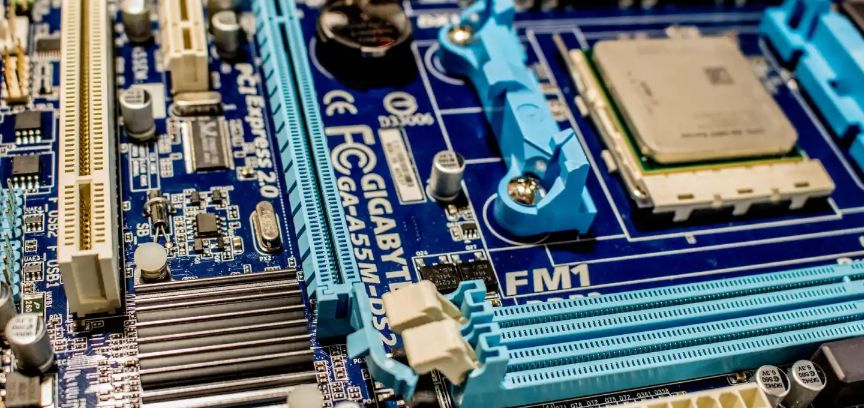The Miniature Marvels: Understanding the World of Microchips
6 min read
19 Apr 2024
In the vast landscape of modern technology, one of the most pivotal innovations has been the development and integration of microchips. These tiny electronic components, often no larger than a fingernail, are the unsung heroes that power our devices, from smartphones and laptops to cars and even household appliances. In this article, we'll embark on a journey into the world of microchips, exploring their significance, evolution, and the remarkable impact they have on our daily lives.
The Birth of the Microchip:
The story of microchips dates back to the mid-20th century, and it's a tale of ingenuity and miniaturization. In 1958, a visionary engineer named Jack Kilby at Texas Instruments designed the first integrated circuit. Kilby's groundbreaking invention combined multiple electronic components onto a single semiconductor material, thus eliminating the need for bulky, individual components. This marked the birth of the microchip and laid the foundation for the technological revolution that followed.

The Anatomy of a Microchip:
At its core, a microchip is a tiny piece of silicon known as a semiconductor. These semiconductors are etched with an intricate network of electrical circuits and transistors that function as electronic switches. The arrangement of these transistors allows microchips to process, store, and transmit electrical signals, effectively serving as the brains of electronic devices.
Microchips in Everyday Devices:
Microchips have infiltrated virtually every aspect of modern life. They are the reason your smartphone can fit in your pocket and perform a multitude of tasks. From the microcontroller in your microwave that regulates cooking times to the microprocessors in your car that control engine functions and safety systems, these miniature marvels are everywhere.
The Evolving Power of Moore's Law:
One of the most fascinating aspects of microchips is their constant evolution. Moore's Law, coined by Gordon Moore, a co-founder of Intel, in 1965, states that the number of transistors on a microchip would double approximately every two years. This prediction has held true for decades, resulting in an exponential increase in computing power. As a result, we've witnessed a dramatic reduction in the size of electronic devices while simultaneously enjoying enhanced capabilities.
Applications in Science and Medicine:
Microchips have also revolutionized the fields of science and medicine. In laboratories, microfluidic chips enable precise control of tiny volumes of fluids, facilitating experiments and diagnostics. In medicine, implantable microchips, such as pacemakers and insulin pumps, have saved countless lives by regulating vital bodily functions. Additionally, microchips are vital components in advanced medical imaging systems like MRI and CT scanners.
The Role in Space Exploration:
Microchips play a crucial role in space exploration, where size, weight, and power consumption are critical factors. These chips enable spacecraft to collect and transmit data, control scientific instruments, and navigate through the cosmos. The miniaturization of technology has opened up new frontiers in our quest to explore the universe.
Challenges and Future Directions:
Despite their incredible capabilities, microchips face challenges as we continue to demand more from our electronic devices. Power consumption and heat generation are limiting factors, particularly in smartphones and data centers. Researchers are actively exploring alternative materials and designs to overcome these challenges while maintaining the relentless pace of innovation.
Security Concerns:
As microchips become increasingly integrated into our lives, cybersecurity becomes a paramount concern. Vulnerabilities in microchip designs can potentially lead to data breaches and other security threats. Consequently, chip manufacturers invest heavily in developing secure architectures and encryption methods to protect sensitive information.
The Future of Microchips:
The future of microchips is both exciting and unpredictable. The integration of artificial intelligence (AI) into microchip design promises to deliver even more powerful and efficient devices. Quantum computing, a nascent field that leverages the properties of quantum mechanics, could revolutionize computing, enabling previously unthinkable calculations and simulations.
Moreover, the Internet of Things (IoT) will continue to drive the demand for microchips as everyday objects become interconnected and smart. From smart homes to autonomous vehicles, microchips will be at the heart of these transformative technologies.
Conclusion:
The world of microchips is a testament to human innovation and the relentless pursuit of technological advancement. These miniature marvels have reshaped our world, making once-impossible feats an everyday reality. As we look to the future, microchips will continue to be at the forefront of innovation, shaping the way we live, work, and explore the universe. It's a world where size truly doesn't matter, but the impact is immeasurable.



